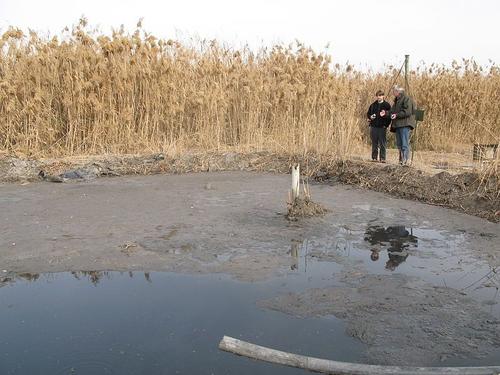Sludge treatment, reuse and disposal
Sludge is produced from the treatment of wastewater in on-site and off-site system. The characteristics of sludge vary widely from relatively fresh fecal materials to sludge, which has undergone bacterial decomposition (e.g. composting toilet). The treatment required is therefore dependent on the characteristics of the sludge. The former may contain large numbers of pathogens, whereas the latter will contain much less due to pathogen die-off. Sludge should, however, always be handled with care to avoid contact with pathogens. Sludge may be contaminated with heavy metals and other pollutants, especially when industrial wastes are disposed into the sewer. Treatment of sludge contaminated with high concentrations of heavy metals or toxic chemicals will be more difficult and the potential for re-use of the sludge will be limited.
Fecal sludge contains essential nutrients (nitrogen and phosphorus) and is potentially beneficial as fertilizers for plants. The organic carbon in the sludge, once stabilized, is also desirable as a soil conditioner, because it provides improved soil structure for plant roots.
Sludge contains a high concentration of solids, but its water content is still high. Combined primary and secondary sludge from a sludge treatment plant contains about 2 % solids and hence 98 % water. To reduce the water content thickening, dewatering or drying of the sludge is needed. Options for sludge treatment include stabilisation and incineration. The latter is most costly, because fuel is needed and air pollution control requires extensive treatment of the combustion gases. It can be used when the sludge is heavily contaminated with heavy metals or other undesirable pollutants. Prevention of contamination of the sludge by industrial wastes is preferable to incineration.
(UNEP 2000)
